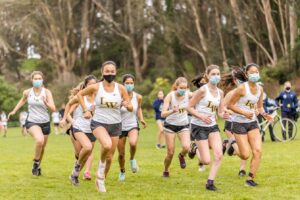The National Association of Independent Schools (NAIS) is tackling one of its biggest challenges yet: health and wellbeing in independent schools across the country. With racial tensions high and the student experience devastated by the COVID-19 pandemic, NAIS is working to secure health and wellbeing for its schools on the broadest scale: from equity and inclusion and the wellbeing of diverse students to funding, initiative execution and access to resources.
Over the past few days, NAIS has gathered over 25 of its member schools in two-hour morning sessions held bright and early (for those of us on West Coast time) to practice causal systems thinking surrounding the interest points that “have the potential for greatest impact or pose the greatest challenge to creating safe and healthy school communities.”
Prior to these sessions, NAIS conducted surveys of its various member schools to identify “variables or interest points that exist in a safe, healthy, anti-racist, and institutionally inclusive school community.” The resulting list of 20 interest points ranged from non-tangible factors like adult and student wellness, privilege to distinct measurables like educational model, dedicated resources and clear expectations. School representatives from across the country gathered to analyze and discuss the ways in which these 20 interest points affect and impact one another.
Indigo Mudbhary ’22 and I had the unique experience of attending one of these sessions. We were members of the LWHS cohort which included Head of School Eric Temple, Director of The Center Christine Godinez-Jackson, Deans Kate Wiley and Chris Yin, School Counselor Dr. Nikkia Young, Learning Strategies Director Winifred Montgomery and ourselves.
“My experience at [the NAIS session] was overall very positive, as I gained insight into how the leadership of our school tries to approach larger problems, something that I feel is important for me to understand as a member of the Student Council,” said Mudbhary, who is the LWHS Student Council Treasurer.
Discussion during the session was framed within the practice of causal systems thinking –– a style of analysis that uses causal loops (feedback loops where each factor can influence and affect each other factor) and diagrams to understand how variables in a system impact one another and ripple out to alter the system itself. At the NAIS conference, the system was health and wellbeing in independent schools and the variables were the 20 points of interest identified by NAIS. These points included, among others, student and adult wellness, commitment, communication, media influence, diversity and representation and educational models.
After introductions and an overview of the session plans, school representatives from each school worked together as a team to create mapping diagrams of systems of health and wellbeing at their school. These diagrams served to illustrate connections between various interest points and demonstrate how causal loops might be created from these connections. For example, with the interest points “privilege,” “diversity/representation,” “student wellbeing” and “belonging,” a causal loop can be created: a decrease in diversity/representation results in an increase of privilege, this causes a reduced sense of belonging harming student wellbeing (making students less likely to apply to a school) thus further decreasing diversity/representation. This is an example of an amplifying loop where each factor serves to exacerbate the next in a seemingly endless cycle. Complex, graphic tools made understanding these systems much simpler during the session.
These graphics were created on the beta version of a burgeoning systems mapping platform called Cauzality (the public platform will launch in June at cauzality.com), a tool that helps with “systemic understanding of the causes of problems and the most effective ways to improve results,” according to their website. This platform allowed us as team members to visualize these causal systems in connection and loop diagrams which helped us to identify the roots of problems in systems of health and wellbeing — as well as possible solutions.

Photo from cauzality.com
The session was an interesting and in-depth look at how members from various parts of our school community view our school and how we as a community are thinking about approaching student wellbeing. Much of the discussion and analysis will likely help the work of the staff and administrators present, as well as Mudbhary’s and my own work on Student Council. Mudbhary said, “I learned a lot about Lick during this conference, especially about how interconnected a lot of our values and areas for improvement are. I am really grateful I got to attend this event. I look forward to debriefing this meeting and working on concrete steps we can take to realize all the goals we talked about.”





